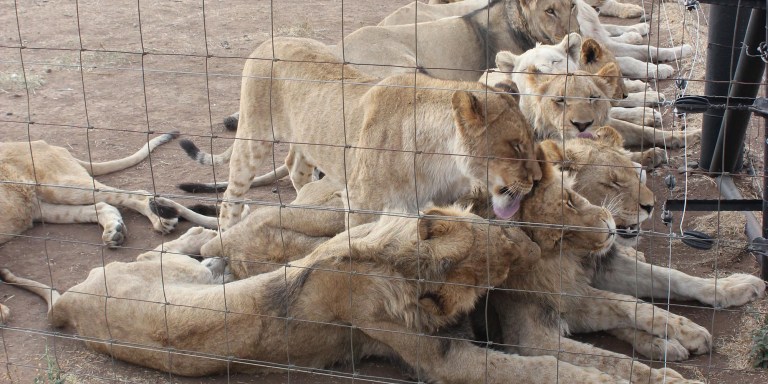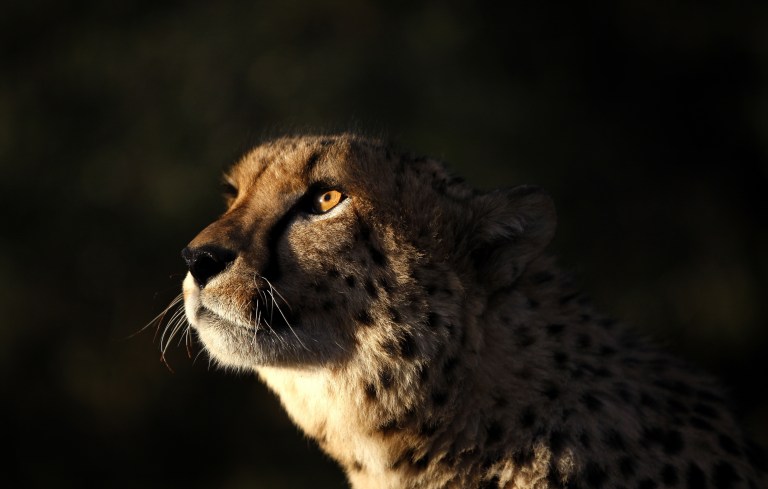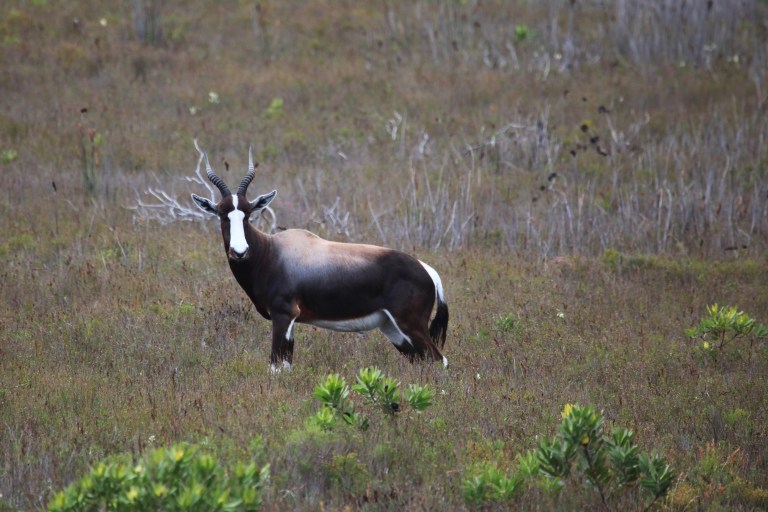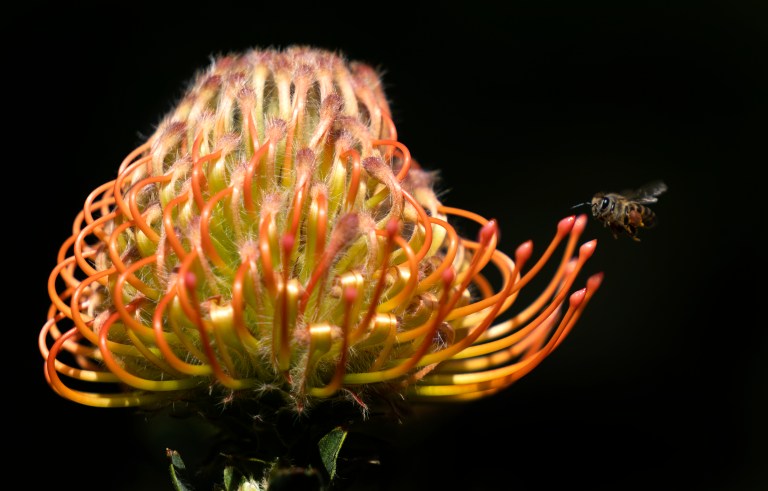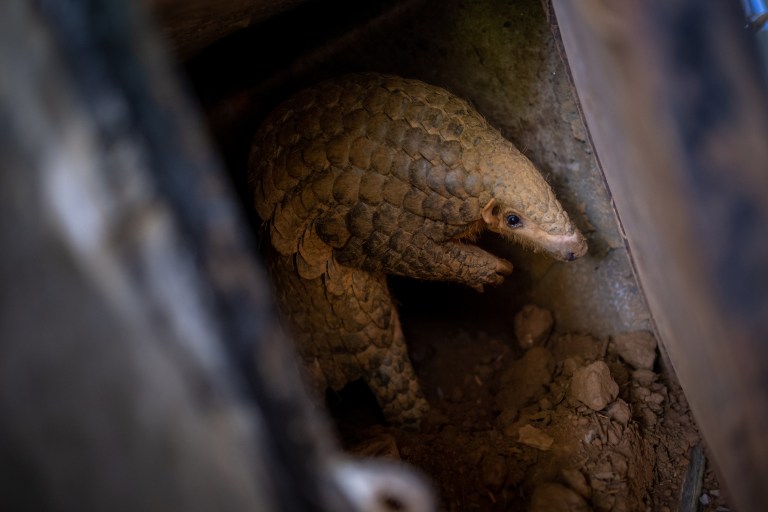100 DAYS REPORT
Environment Minister Dion George delivers a refreshing message — but can he walk the talk?
 Minister of Forestry, Fisheries and the Environment Dr Dion George. (Photo: Luba Lesolle / Gallo Images)
By Don Pinnock | 22 Jun 2025
Minister of Forestry, Fisheries and the Environment Dr Dion George. (Photo: Luba Lesolle / Gallo Images)
By Don Pinnock | 22 Jun 2025
Reporting on his first year in office, Dion George was clear, firm, and unapologetic. Whether his promises will be backed by policy, enforcement, and legislative clarity remains to be seen.
________________________________________________________________________________________________________
The minister of forestry, fisheries and the environment, Dr Dion George, has declared an uncompromising stance against the uncontrolled exploitation of South Africa’s wildlife.
Though his official One Year of Progress report last week was the expected list of good deeds and projects, he was more forthright at question time. “I will not be setting a quota for lion bone exports,” he said in answer to a question after his address. “And I have no intention of doing so.”
He said he would wait until “a judge says something, and then when they do I’ll decide what I’m going to do”.
The session was dominated by tough questions on wildlife ethics, mining and international trade in rhino horn. George positioned himself as a minister willing to confront entrenched industries, foreign pressure and even other government departments — particularly when it comes to the protection of lions, elephants, rhinos and cheetahs.
Captive lion breeding
In his presentation, George gave a firm commitment to bringing the controversial captive lion breeding industry to an end.
However, on the ground, his intentions don’t line up with actions. In a scathing report to Parliament earlier this month, the NSPCA outlined the ongoing cruelty of the industry and the snail’s pace of change.
George outlined his strategy. The first step, he said, had been to not register new facilities. “No new breeding operations can open without my permission, and no one has asked for that permission.”
Thousands of lion carcasses — once stockpiled for the bone trade — are now available for destruction. However, George gave no indication as to how or when this would be done. Nor was there any clarity on how many breeders had accepted the government’s voluntary exit programme
The next hurdle, according to George, will be negotiating with private owners who still have live lions. “That’s where it’s going to get sticky,” he admitted, “but the process continues.”
This policy, he said, builds on a Cabinet decision to phase out captive breeding for commercial purposes, a practice long criticised by conservationists and international observers for fuelling illegal trade and cruelty.
International rhino horn trade
George rejected lobbying efforts to legalise international trade in rhino horn.
“Let me be clear,” he said, “there is an international ban, and we have no intention of requesting that to be lifted.” This comment seems at variance with his written report, in which he says: “The trade of rhino horn and lion bone [is] under consideration.”
While domestic trade in rhino horn remains technically legal — after a 2017 court ruling overturned a government moratorium — George questioned its relevance.
“What do you do with this massive stockpile of horn?” he asked. “A large part is from natural deaths, but the idea of a once-off sale raises serious concerns. Does it feed demand? Does it encourage poaching later?”
He added that no move toward such a sale was planned in 2025 and emphasised the need for “thought and caution” before any further steps were taken.
Read more: Let it burn, says animal welfare NGO about South Africa’s 75-tonne rhino horn stockpile
Cheetahs to India
South Africa’s controversial cheetah export programme to India also came under scrutiny by journalists at question time, occasioned by the high-profile deaths of relocated animals.
“There were climate issues, wrong timing and other problems,” said George. “I’ve received a comprehensive report, but I’m not satisfied.”
Until he visits the Indian facilities and confirms that conditions meet South Africa’s standards, no further cheetahs will be exported.
“I will not approve anything else until I’ve seen it with my own eyes,” he insisted. “Reports aren’t good enough.” He said he wasn’t planning a trip to India anytime soon.
Elephant numbers
On the topic of elephant population, George took a more nuanced position. While acknowledging a growing population in Kruger National Park, he pointed to differing views on the issue.
“There is science — and then there is science,” he quipped. Some ecologists argue that elephants are damaging vegetation and squeezing biodiversity, while others say the damage is overstated when the park’s vast size is considered.
George has already signed off on a comprehensive elephant management plan, developed with SANParks. “Culling is included as a last resort,” he said, “but we have not taken that decision.” Any such move would be science-driven and tightly controlled.
Mining battles
George was asked if he was willing to challenge the Department of Mineral Resources and Energy (DMRE), especially near ecologically sensitive areas such as Hluhluwe-iMfolozi Park, where coal prospecting is under way.
Currently, under the One Environment System, the DMRE grants environmental approvals for mining — a framework many conservationists argue is inherently conflicted. George is not yet calling for a legislative overhaul, but made it clear that he acts as an appeals authority and has not shied away from overruling mining permits when necessary.
“There does arise sometimes a difference of opinion. The Department of Minerals’ push is to mine, because that’s their function. What is my mandate is to make sure that the environment is not degraded, that it is healthy, and if there’s mining it’s restored, etc. So, the current situation as it is does sometimes cause some abrasion.”
He said he had made decisions that made some people extremely unhappy. “But I will continue to make them — without fear, favour or prejudice. If I’m taken to court, then so be it.”
His office, he claimed, had finalised 162 environmental appeals since July 2024, “a majority of which were processed in the past 100 days” — a reflection, said George, of his commitment to fast, fair and science-based decisions.
Read more: Coal hunters encircle Africa’s first wilderness and rhino sanctuary
Wellbeing
George’s stand on wildlife wellbeing comes as broader regulations, such as Nemba, remain mired in litigation, and the long-awaited National Environmental Management Laws Amendment (Nemla) Act 2 has not yet been promulgated. One flashpoint is whether animal wellbeing should be explicitly included in environmental law — a clause now under legal dispute.
“We do already have some legal avenues to enforce welfare,” he said. “But government wants to get this right. We need it in the law.”
There is presently a case in the Constitutional Court by the SA Hunters and Game Conservation Association to strike down the legislation on the treatment of wild animals, and particularly the word “wellbeing” in the draft. There is as yet no clarity whether George’s department will stand firm or buckle.
So sue me
It is, however, rare for a South African minister to tread so publicly on such thorny ground, particularly when it risks clashing with powerful sectors like mining, game farming and international trade diplomacy. Yet George seemed unfazed.
“People are unhappy with decisions? Then they must take it through the courts,” he shrugged. “That’s how it has to work.”
He portrayed himself as a fact-driven pragmatist in a complex political environment. “We are a developing country. There is always a tension between economic growth and environmental protection. But our constitutional mandate is clear.”
Lines in the sand
Whether George’s promises will be backed by policy, enforcement and legislative clarity remains to be seen. The issues he addressed — lion exploitation, elephant overpopulation, cheetah ethics, rhino commodification and mining authority — are long-standing, legally tangled and politically sensitive. But his speech to Parliament was clear, firm and unapologetic.
In a country where environmental policies are often compromised by vested interests and bureaucratic inertia, George’s words were refreshing. “I will not permit further cheetah exports. I will not allow new lion farms. I will not support reopening the rhino horn trade.”
For now, those statements are a line in the sand. Whether they remain there — or get washed away by the tides of industry and politics — will define George’s legacy as minister. DM


